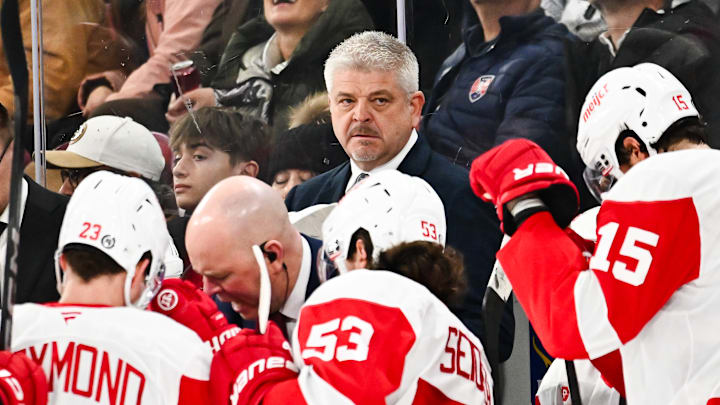The penalty Kill of the Detroit Red Wings in 2024-25 was historically terrible, not only for the franchise, but also in relation to the history of the NHL. In fact, there have only been three teams in the history of the NHL who have recorded a worse penalty-kill percentage: the 78’-79’ Capitals, 82’-83’ Kings, and the 79’-80’ Kings.
Needless to say, it will be incredibly hard to repeat such an embarrassing display of short-handed play in the upcoming season. With an overall PK of 70.1 percent last season, it is arguably the most important thing for the Red Wings to focus on during the offseason, even more than a top-six forward.
Yes, the fanbase is screaming into the clouds about the lack of additions in the top end talent on the roster. Half of those people want general manager Steve Yzerman gone and the other half find blame in the players not leveling themselves up as the impatience of prospect development is growing tiresome.
Like it or not, Detroit was unable to strike a deal with top-end talent in free agency, thus forcing management to try and improve around the edges with what seems to look like bottom half lineup players. But let’s look beyond where they fit in the lineup. I urge you to look at how they might be used.
Mason Appleton is clearly not a household name for the average hockey fan and most definitely not a top-six caliber forward for any team in the NHL. What he is, however, is a high end penalty killer with a physical ability to disrupt opponents when they have time and space on the power play.
His success in Winnipeg especially was important in determining how he may be utilized in Detroit
For years, the Wings have lacked a true penalty killer with the aggressive motor of someone like Appleton. Does he increase the overall offense of the team? No. But he does increase the success of a penalty kill unit that was historically bad.
Defenseman Jacob Bernard-Docker was signed to a $875,000 AAV contract in free agency and most people made nothing of the signing. This is in part because of the cost of the contract and likely because, in terms of lineup position, he is nothing more than a third-pair defenseman.
Both of those things are true, but what has gone unnoticed is the fact that he has already improved the third pair defensively by replacing what will presumably be Juston Holl’s spot on the roster. More importantly, he is an improvement on the penalty kill for when Todd McClellan will call his number.
Speaking of the head coach, Todd Mclellan will now have a full offseason and training camp to establish his systems on the penalty kill without having to jump behind the bench mid-season and tweak things on the fly.
Odds are, he will find all of this much easier to do with what is sure to be a stronger goaltending room than what he was forced to work with last season. The addition of John Gibson alone should help the PK. He posted a save percentage of .911 last season, which is an improvement on Talbot’s .900.
I get it, neither Anaheim nor Detroit touted a strong defensive unit, so it may be hard to project how the play will translate from California to Michigan. The best part about trying to project that, is having the belief that even with the limited additions, the bar has been set so low that it will be nearly impossible to clear.
The goal; do not be one of the worst PK units in the history of the NHL again. Even if Detroit were to rank bottom five in the league next season, it would still be a massive improvement and quite possibly be enough to propel them back into the playoff discussion.
More from Octopus Thrower
